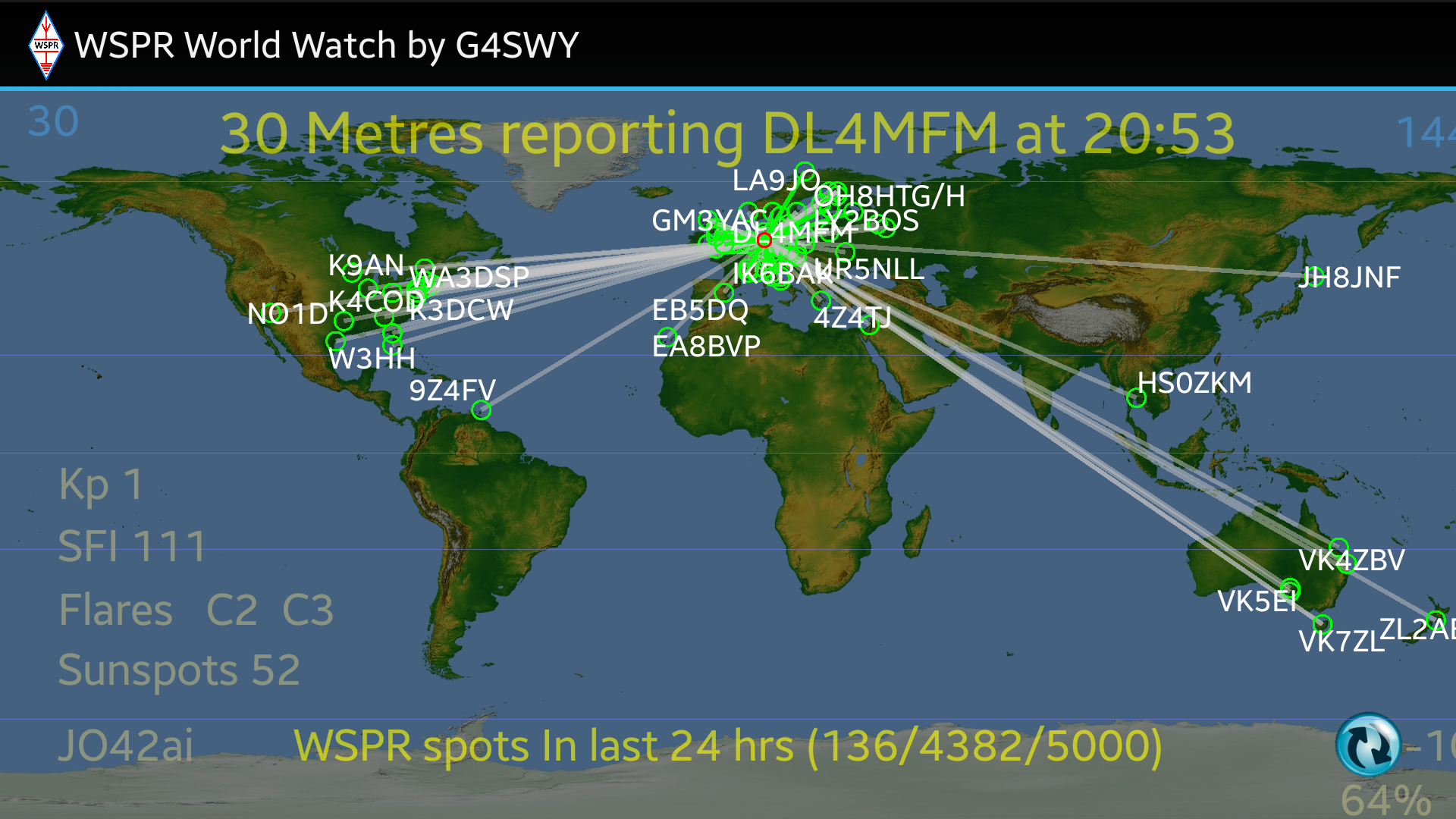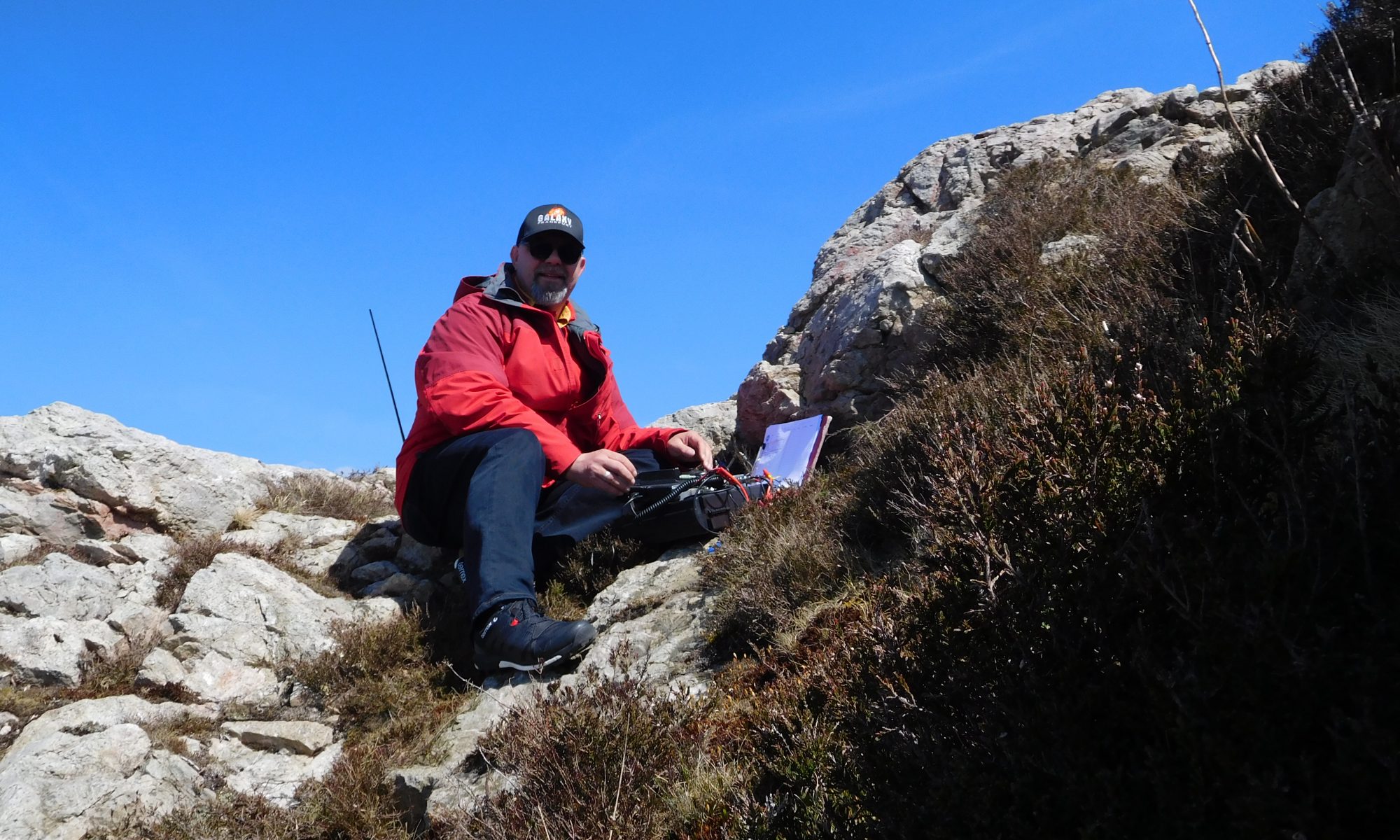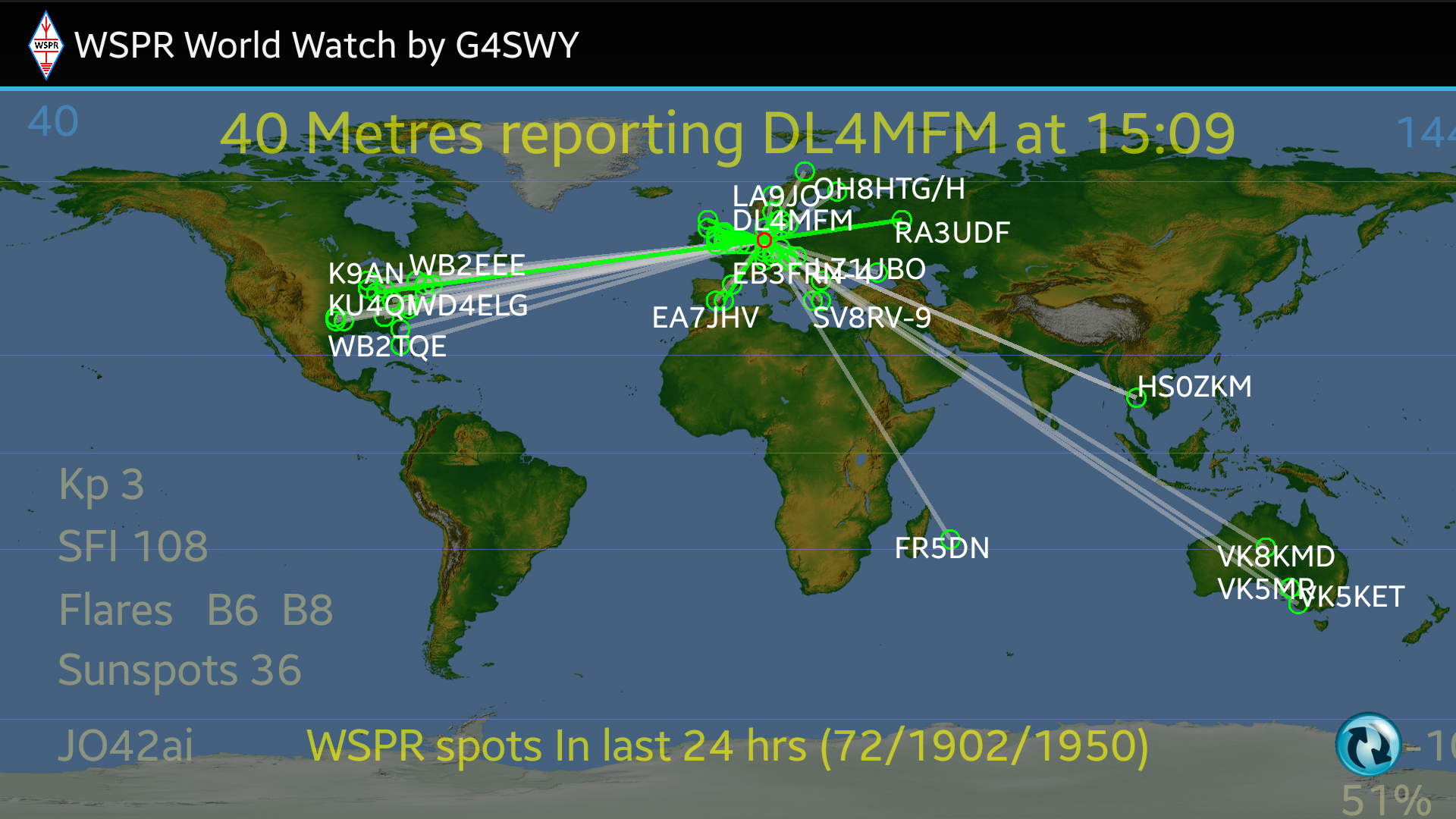
![]() WSPR (sprich whisper) steht für Weak Signal Propagation Reporter. Im Grunde ist das nichts anderes als eine „Baken-Software“ mit schmaler Bandbreite mit einer automatischen Rückmeldung von Empfangsstationen via Internet. So können live die aktuellen Ausbreitungsbedingungen festgestellt werden.
WSPR (sprich whisper) steht für Weak Signal Propagation Reporter. Im Grunde ist das nichts anderes als eine „Baken-Software“ mit schmaler Bandbreite mit einer automatischen Rückmeldung von Empfangsstationen via Internet. So können live die aktuellen Ausbreitungsbedingungen festgestellt werden.
Per Digitalmode wird Rufzeichen, QTH-Locator und Sendeleistung in einem Zufallszeitsfenster gesendet. Wer mich empfangen hat, kann ich auf einer Google-Map auf der Webseite www.wsprnet.org beobachten. SO kann ich die Augenblicklichen Ausbreitungsbedingungen und die Performance meiner Antennen selbst und aktuell feststellen.
QRV zu werden ist recht einfach: es wird die entsprechende Software von der WSPR Webseite geladen und installiert. Per CAT (wer PSK oder JT65 gemacht hat, hat die Verkabelung ja sowieso schon) und Soundkarten-Interface kommunizieren PC und Funkgerät.
Viele Stationen benutzen Sendeleistungen von 1w und weniger. Ich wollte, neben den aktuellen Ausbreitungsbedingungen, auch die Performance meiner Antenne (Kelemen 30/40/80m) testen und habe 10w Output auf die Antenne gegeben. Das Ergebnis kann auf den Screenshots der „WSPR World Watch“ App abgelesen werden.
Der Empfang in Südamerika und Afrika ist nicht schlechter als woanders, jedoch gibt es dort kaum WSPR-Stationen und darum bleiben diese Erdteile weitgehend ein weißer Fleck.
![]() WSPR (pronounced whisper) stands for „Weak Signal Propagation Reporter“. Basically, this is nothing but a „beacon software“ with narrow bandwidth and automatic feedback of receiving stations via the Internet. So the current propagation conditions can be observed live.
WSPR (pronounced whisper) stands for „Weak Signal Propagation Reporter“. Basically, this is nothing but a „beacon software“ with narrow bandwidth and automatic feedback of receiving stations via the Internet. So the current propagation conditions can be observed live.
WSPR transmitts per digital mode in a random time window the callsign, QTH locator and power. I can watch on a Google Map on the website www.wsprnet.org anyone who has received me. So I can check the actual propagation and the performance of my antennas.
To be QRV is quite simple: download and install the software from the WSPR website (Linux/WIndows). By CAT (who made PSK or JT65 has the wiring anyway) and sound card interface communicate PC and transceiver.
Many stations use transmitting power of 1w or less. I wanted, in addition to the current propagation conditions, test the performance of my antenna (Kelemen 30/40/80m) and have 10w output given on the antenna. The result can be read on the screenshots of „WSPR Worldwatch“ App.
The reception in South America and Africa is no worse than elsewhere, but there is hardly WSPR stations and therefore these parts of the world remain largely uncharted.


